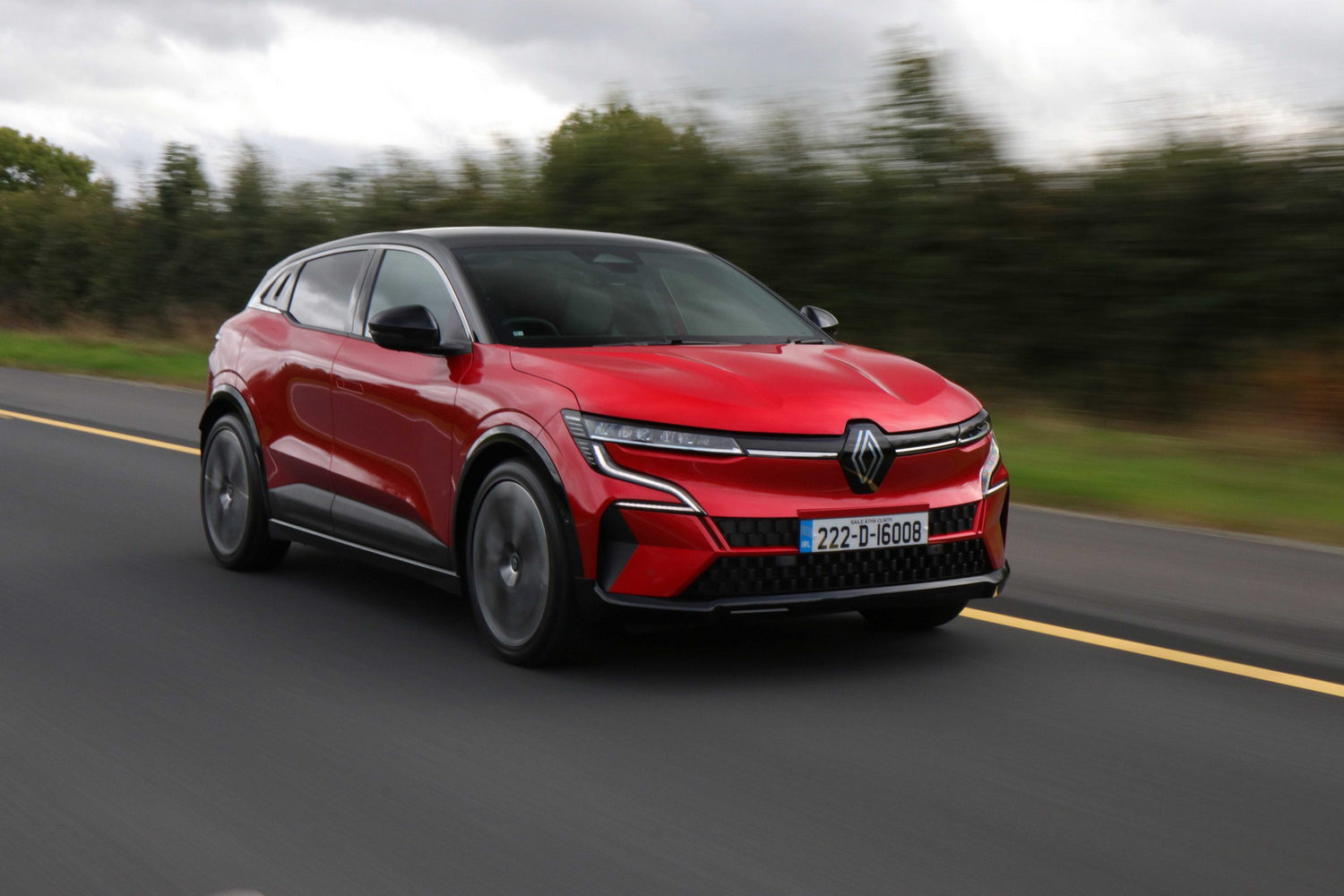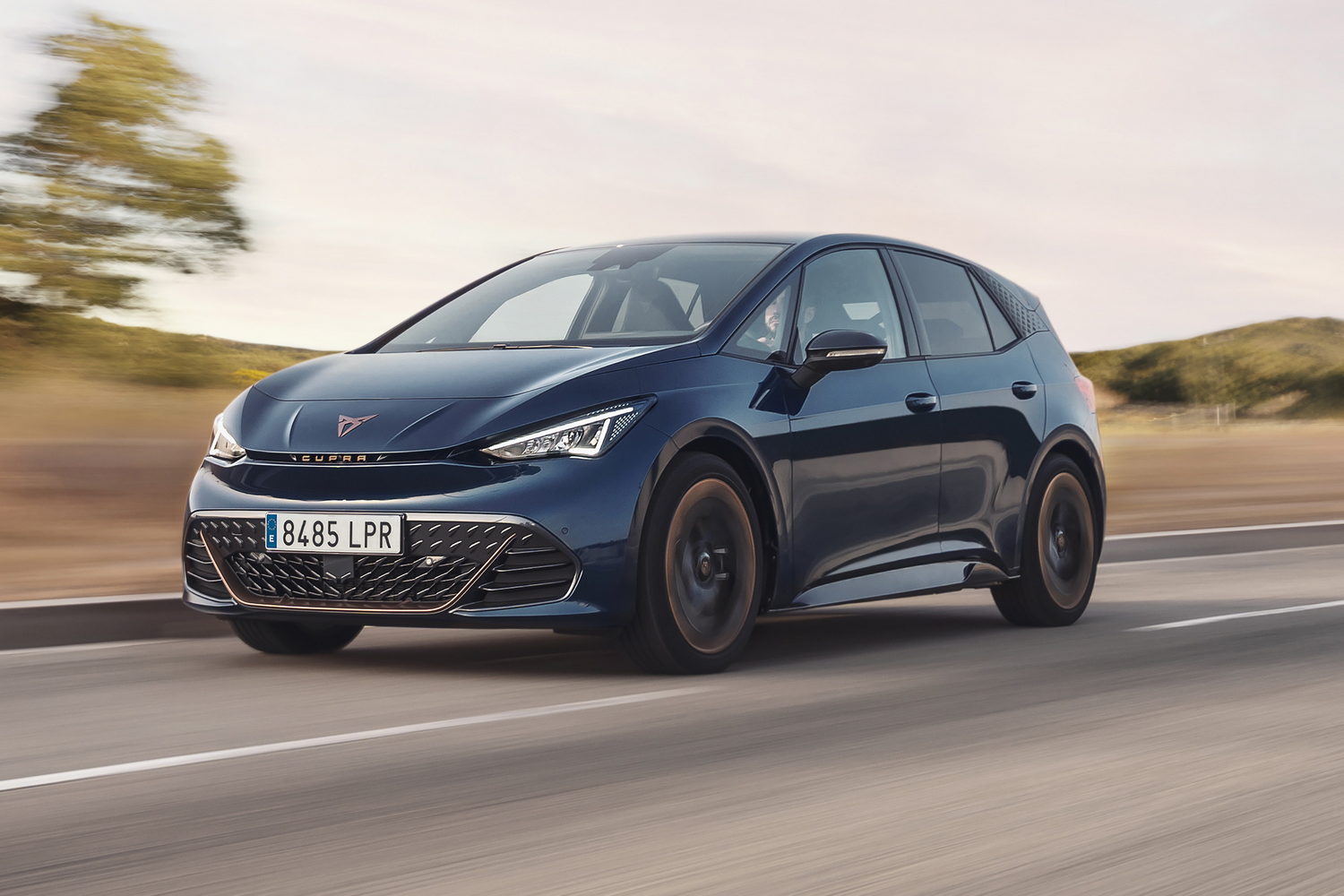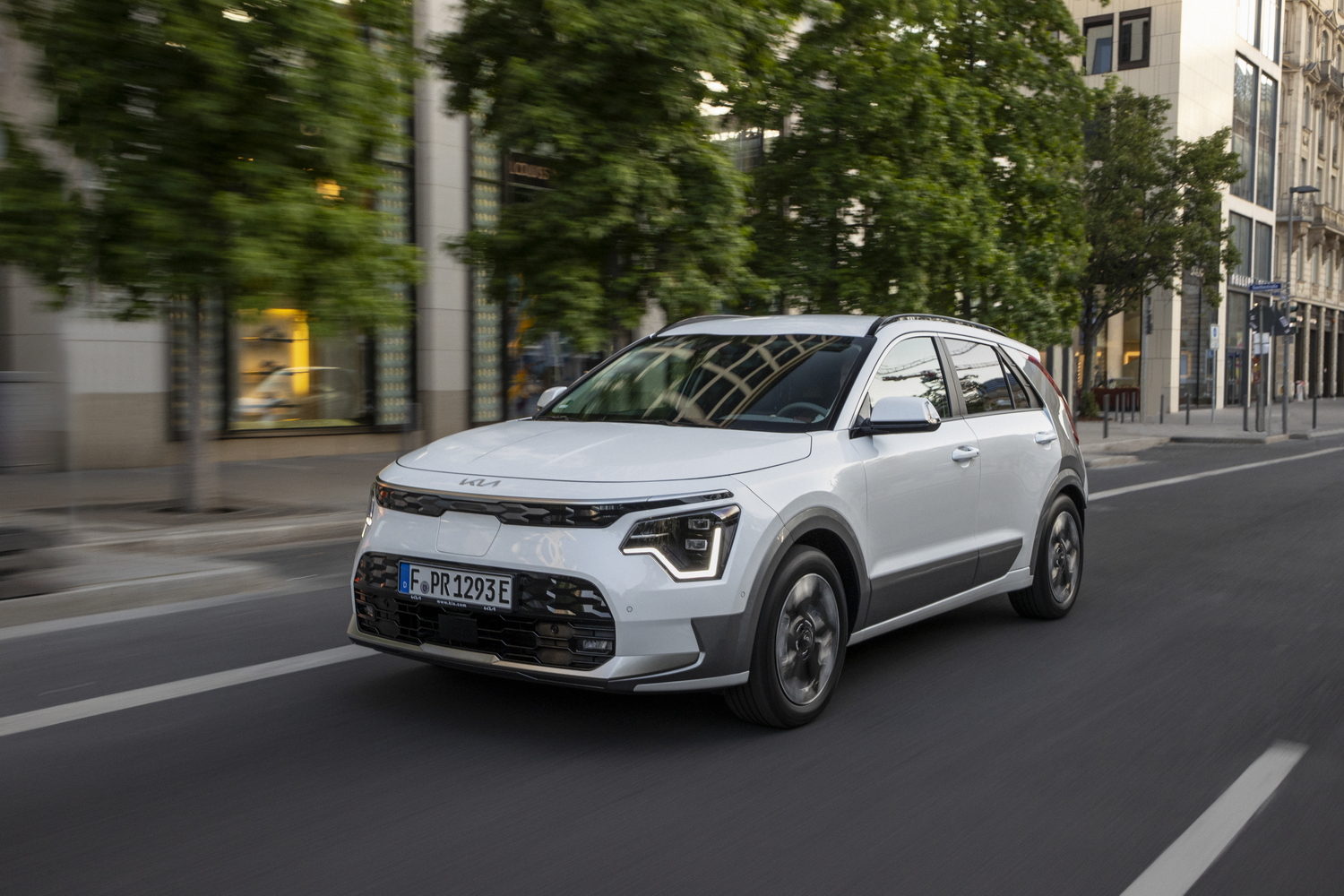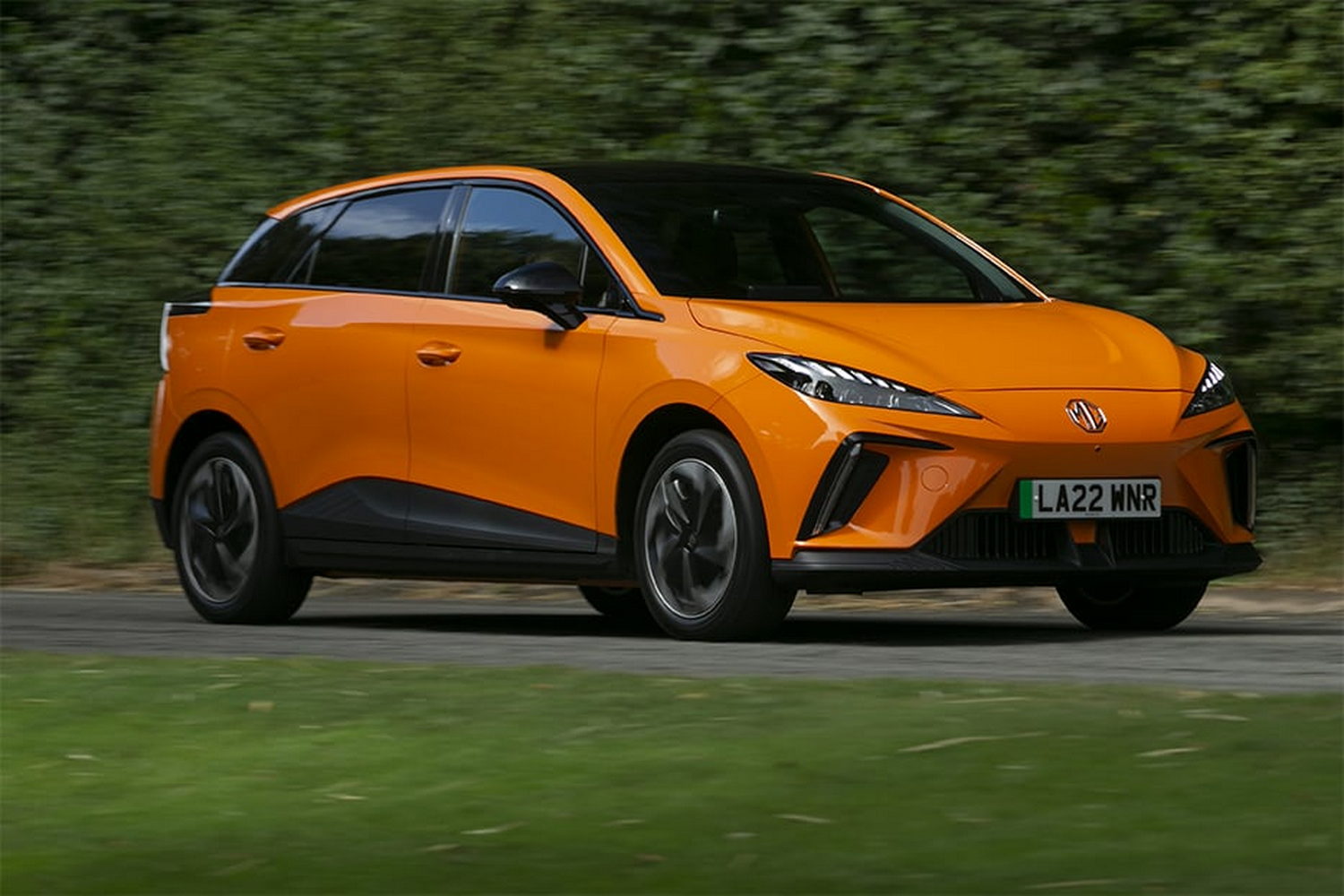Renault Megane E-Tech Electric overview
This is a bit of a biggie - this is the new all-electric Megane and as such it's the first mainstream family car to go fully electric. Rivals from Peugeot and Opel have hedged their bets with conventional internal combustion and plug-in hybrid models, as well as upcoming electric versions, while Volkswagen has decided for now on a split range with the stolid Golf still selling alongside the more forward-thinking ID.3.
That makes this car something of a risk for Renault, not least because the new Megane E-Tech's starting price is up where the old Megane's top-spec model would have sat. It's potentially a big ask to get customers who'd have bought a previous Megane (a car noted for sharp pricing) to step up to buy one of these.
Then again, Renault has sweetened that pricing pill by making the new Megane look very enticing, both inside and out. The styling is a mix of crossover and hatchback cues, to the point where it looks almost like a taller SUV that's been through the 1950s US custom car 'lead sled' treatment. It's certainly striking.
Will those looks, and some impressive on-paper figures, be enough to convince previous Megane owners to trade up, and current ID.3 (and other) owners to trade-in?
Renault Megane E-Tech Electric model range
The Megane E-Tech range is split in two. There's a basic, small-battery version that is available in two trim levels, and a big-battery model, which also comes with more power, which is available in the same two trims. There's also a limited-run high-spec 'Launch Edition' that comes only with the big battery and the more powerful motor.
The smaller battery is a 40kWh unit, which gives the Megane E-Tech a theoretical one-charge range of 300km. It is paired with a 130hp electric motor, driving the front wheels through a single-speed reduction gear automatic transmission. In basic Equilibre form, prices start at €37,495 inclusive of all incentives.
Standard equipment for Equilibre models includes 18-inch 'Oston' alloy wheels, full LED headlights, black fabric upholstery including a fabric-covered upper dashboard, ambient lighting, air conditioning, one-touch electric windows, heated steering wheel, heated front seats, rear park assist, rear-view camera, 12.3-inch instrument cluster, nine-inch 'OpenR' infotainment display with navigation, Android Auto and Apple CarPlay, connected services including over-the-air software updates, four-speaker Arkamys audio system and two front USB-C ports.
All models come with a five-metre Mode 3 charging cable as standard and a hands-free key card with keyless entry, together with safety and driver assistance systems including distance warning alert, traffic-sign recognition, automatic emergency braking with junction assist including pedestrian and cyclist alerts, cruise control with speed limiter, driver drowsiness alert, emergency lane keeping assist with oncoming traffic and road-edge detection, hill start assist and emergency e-call.
For €41,995 you can upgrade your Equilibre model to the larger 60kWh battery, which gets a 450km range and comes with the significantly more powerful 220hp electric motor.
Higher-spec Techno models start at €39,995 for the 40kWh version, or €45,295 with the 60kWh battery. Standard spec, over and above what you get in the Equilibre, includes 20-inch Soren alloy wheels, full adaptive LED headlights with automatic high/low beam, front and rear signature lighting with dynamic indicators, contrasting door mirrors and a shark fin antenna. The interior, meanwhile, gains grey and black upholstery made from synthetic leather and recycled materials, tinted rear windows, a frameless auto-dimming rear-view mirror, multi-sense customised driving modes and 48-colour interior ambient lighting.
Also added are dual-zone climate control, automatic windscreen wipers, height and electric lumbar adjustment for both driver and front passenger seats, the full range of Google services including Google Assistant, Maps and Play store, wireless smartphone charging, an upgraded Arkamys audio system with six speakers and two rear-mounted USB-C ports.
The top-spec Launch Edition comes only with the 60kWh battery and the 220hp motor, and costs €47,795. Standard specification includes 20-inch Enos alloy wheels and gold 'F1 blade' styling trim, while the interior gains a nine-speaker Harman Kardon audio system, 'smart' rear-view mirror and a surround-view 3D camera system.
At the time of writing, Renault Ireland had not issued any specific PCP or HP finance offers for the Megane E-Tech, so keep an eye on renault.ie for updates.
The Renault Megane E-Tech Electric interior
The exterior of the new Megane is stylish enough, but the cabin is so good that it might just be the car's single best aspect. It starts with seats that look enticing, covered in a tweed-like cloth that strikes a faintly retro note. Sit in and you immediately notice that the cabin feels more intimate than you expect. Unlike the Volkswagen ID.3, which has gone for an almost MPV-like cabin layout, the Megane's low-set roof clings closely to the top of your head, creating a more overtly sporting ambience. It's not cramped, though. True, headroom is not spectacular (although, for reference, your six-foot-one correspondent was able to get perfectly comfortable), but legroom front and rear is perfectly fine, and the driving position has a broad bandwidth of adjustment.
The dash is all-digital, and while there is the option of a massive, 12-inch portrait-style touchscreen for the infotainment system, I'm not sure I'd bother. The smaller, squarer nine-inch screen fitted to our test car is one of the best that I've yet used. It helps (immeasurably) that the heating and air conditioning controls are neat physical rocker switches mounted just below the screen, but it arguably helps more that - following on from several iterations of disappointing infotainment design in previous models - Renault has passed on the development work to Google.
Yes, Google is both worryingly omnipotent and omnipresent in our lives as it is, but darned if it can't design good software. The screen is slick and easy to use, responsive and looks great. Google Maps is integrated into the system, or you can connect your Apple iPhone via CarPlay. In the 12.3-inch instrument display, you can switch between useful screens - including a full-width Google Maps navigation screen or a 'driving' display that gives you a live timing readout of how close, in seconds, you are to the car in front (this is to help you stick to the 'two-second' rule for safety purposes).
The steering wheel is a compact, relatively chunky thing that feels really good to hold and which mimics the wheel of the BMW iX with its squared-off shape. It's not quite as nice to use when cornering as would be a properly round wheel, but it certainly looks good and we like the slightly retro Renault diamond badge in the centre, which harks back to the line-drawing look of the 1970s and 1980s. The wheel has buttons built into it for the cruise control and trip computer, and there's a Ferrari-like driving mode button in a pod hanging off the right-hand side of the centre. Actually, the right-hand side of the wheel is a bit crowded, as not only is there the driving mode switch, but also the wiper stalk, the gear selector stalk and a separate pod for the fingertip stereo controls. It can be a bit overloading at times to work out which stalk to grab or which button to jab, but I guess an owner will soon get used to it.
Overall quality is excellent. There are some cheap bits and pieces, but overall it's a really lovely cabin. Our car came with a soft fabric covering the passenger side of the dashboard, while the doors got nice little Alcantara suede-like panels.
Storage is also excellent. The door bins are ever so slightly narrow, but there's a good-sized storage box under the front-seat armrest, and a massive open storage area that runs all the way under the centre console. That's big enough to hold a large handbag or even a laptop bag, and it comes with one fixed and one adjustable cupholder. There are two USB-C sockets in the front, and on Techno and Launch Edition models, two more in the back.
The boot is a little odd. First of all, the boot release switch is a square piece of indented plastic sitting below the Megane badge on the boot, which looks rather incongruous. Press it, and lift the boot lid and there's a very useful 440-litre space, underneath which is a small underfloor area beneath a flap that is perfect for storing your charging cable. However, there is a very deep boot lip, which makes loading large or heavy items awkward, and while the seats do fold 60:40, they don't fold flat and there's no adjustable boot floor, so you'll always end up with a massive step in the available space. There's no front-boot (frunk? Froot?) either.
Visibility is good out the front, thanks to the relatively low-set dashboard, but it's quite poor to the rear, where that low roof and a small rear window mean you'll not see much over your shoulder or directly behind. Thankfully, there is a reversing camera, which has a nice, sharp, hi-def display, which helps a bit in that regard.
The Megane E-Tech Electric driving experience
Let's start with range, as this is - usually - where an electric car lives or dies. Renault quotes an official one-charge range of 450km for the 60kWh version of the Megane E-Tech, which is very impressive. It's also, going on our experience here, not easily achievable. In fact, on a full charge, the longest range we could get the Megane to display was 320km. Generally speaking, your worst-case range scenario in rivals such as the VW ID.3 and Cupra Born would be about 380km, and the same for a similarly-priced Kia Niro EV.
However, this doesn't quite tell the full story, because range and charging are inextricably intertwined. In Ireland right now there is a distinct shortage of properly high-powered DC charging points, which means that you have only limited opportunity to make the most of the Megane's 130kW maximum DC charging speed. That could be incredibly frustrating, but for one thing - like the smaller Renault Zoe, the Megane comes as standard with an on-board 22kW AC charging system. The vast majority of Ireland's public charging points are, helpfully, 22kW AC chargers, the boxy ESB ones you see at kerbsides. Plugging the Megane into one of these is like accessing an EV cheat code, as by sucking down a full 22kW, it can charge quickly, if not quite rapidly - and let's not forget that the majority of DC fast chargers are only 50kW power and rarely, if ever, pump out a full 50kW, further narrowing the gap in the Megane's favour.
As an example, at one point during the test drive I plugged in to top up the battery when it was 50 per cent charged. Charging from a 22kW AC charger, the Megane topped itself up in a one hour and 45 minutes. That's not just impressive in isolation, it means that the truncated driving range doesn't really impinge on your daily life, because you can quickly top up from more or less anywhere.
Thankfully, the Megane is also pretty nice to actually drive. It's quite light by EV standards - just over 1,600kg - and for the most part it feels really positive to drive. The steering is over-assisted, but it feels direct and reasonably accurate, and switching into Sport mode definitely helps with the weighting. Thanks to the low centre of gravity (battery under the floor and all that) the Megane feels well-balanced in a fast corner, and grips strongly with understeer only really setting in at the last moment, or if you're trying too hard.
It's not keen on sharp mid-corner bumps though, which can set the suspension into something of a mental tailspin, unable for a moment to control the car's weight. The ride quality on the 20-inch wheels of our test car was for the most part fine, but it could become rather knobbly a times. I'd like to try a Megane on the standard 18-inch rims actually. And I wonder would those improve the one-charge range a bit.
Refinement is mostly good. Wind noise is very well suppressed, and there's little-to-no whine from the electric motor, but there I a bit of road noise on coarse surfaces.
Overall, the VW ID.3 has a refinement edge and a ride comfort edge, but the Megane is more engaging to drive, and feels more agile on a twisty road.
Our verdict on the Megane E-Tech Electric
With the new Megane E-Tech, Renault moves right to the front of the EV class. Now, that's a prefect's position that may not last long, what with the impressive and affordable MG 4 waiting in the wings, but for now the Megane has an enticing blend of style, comfort, space, just-enough range and excellent charging capability.
What do the rest of the team think?
It's refreshing to be driving a proper electric car, instead of the ubiquitous SUVs that the car makers are prioritising. I really really like the new electric Megane, even if it isn't perfect in every way and it isn't the cheapest electric hatch on the market. It drives well, it can make great use of the public charging network and it looks stunning outside and in.
Shane O' Donoghue - Editor
















































